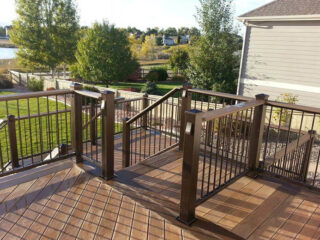
In the past, we sought wellness through routines, diets, or external rituals. Today, that definition is expanding beyond what we do to include where we live, work, and rest. Our surroundings shape how we feel, how we move, and how we think. That’s why many visionaries are embracing a new philosophy: designing spaces that actively support wellbeing. One of the most influential voices in this space is Vera Iconica, a firm known for merging architecture with mindful living. Their approach invites us to see design not just as a visual experience, but as a tool for personal transformation.
Architecture as a Wellness Practice
Traditionally, architecture focused on structure, style, and utility. While these elements remain essential, a new layer is being added—how a space impacts human health. Wellness architecture considers factors like light, air quality, acoustics, biophilic design, and spatial flow. It asks: Does this room help me breathe more deeply? Does it encourage presence? Can it reduce stress?
This shift transforms architecture into more than shelter—it becomes a wellness practice in its own right. The materials chosen, the orientation of windows, even the way you move through a hallway—each decision can influence your state of mind and physical health.
Designing for the Senses
Wellness-centered spaces appeal to more than just the eye. They engage all the senses. Imagine entering a home where natural light fills every room, soft textures ground your feet, fresh air circulates freely, and ambient sound fosters calm. These aren’t luxuries but design decisions rooted in neuroscience and human needs.
For instance, research shows that exposure to daylight improves mood and sleep cycles. Thoughtful acoustics reduce anxiety and improve focus. Natural materials like wood and stone bring comfort and a sense of connection to the earth. Every sensory element is a chance to invite wellness into everyday moments.
The Role of Nature in Design
Biophilic design—integrating natural elements into built environments—is one of the pillars of wellness architecture. This doesn’t just mean adding a few potted plants. It’s about creating a deep relationship between the indoor and outdoor world.
Open courtyards, garden views from the kitchen, natural ventilation, and water features all contribute to a sense of harmony. Studies show that even brief exposure to nature can lower cortisol levels and improve cognitive performance. In a wellness-centered space, nature is not an afterthought. It’s the foundation.
Mindful Layouts and Flow
How we move through a space affects how we feel within it. Wellness architecture considers the emotional rhythm of a home or workspace. Instead of abrupt transitions or cluttered layouts, the goal is flow-spatial organization that promotes ease and mindfulness.
Private areas like bedrooms are intentionally separated from active zones. Meditative nooks are carved out for pause. Kitchens are opened to allow for connection and shared nourishment. These design elements quietly support healthier behaviors, from sleep hygiene to social interaction.
Material Choices That Support Health
Building materials have a direct impact on our health. Many common components of modern construction can contribute to indoor air pollution, from VOCs (volatile organic compounds) in paints to off-gassing from synthetic flooring.
Wellness-focused design prioritizes non-toxic, sustainable materials that respect both human and environmental health. This includes everything from natural insulation to responsibly sourced wood. Doing so makes the space cleaner, safer, and more aligned with long-term well-being.
Designing for Mental and Emotional Wellbeing
Beyond the physical, architecture also shapes how we feel emotionally. Spaces that are too stark or overstimulating can leave us drained or disconnected. Wellness architecture embraces balance—spaces that feel both uplifting and grounding.
Color palettes are chosen for their psychological effects, with calming neutrals and earth tones often preferred. Natural light is maximized while glare is minimized. Visual clutter is reduced in favor of minimal, intentional design. The result is a space that supports mental clarity and emotional balance without overwhelming the senses.
Spaces That Encourage Connection
Wellness isn’t just individual—it’s also relational. The built environment plays a powerful role in how people connect. Design can either isolate or invite interaction.
Gathering spaces like open-plan kitchens, fire pits, shared gardens, or communal work tables foster connection and community. These elements are especially valuable in a time when digital communication dominates, and meaningful human interaction can be harder to come by.
A New Standard for the Future
Wellness architecture isn’t a passing trend. It’s a new standard recognizing our surroundings’ essential role in physical, emotional, and social well-being. As more people seek balance, calm, and purpose, the demand for thoughtful, health-supportive spaces will only grow.
Architects, designers, and homeowners alike are now beginning to ask deeper questions about the purpose of space. How does it serve life? How does it help people thrive?
Final Thoughts
Redefining wellness through architectural design invites us to view our homes and buildings as active participants in our wellbeing journey. It’s not just about how a space looks, but how it supports us in feeling centered, alive, and whole.
Firms like Vera Iconica lead this evolution by creating environments that elevate design and the human experience. These spaces gently bring us back to ourselves in a world that often pulls us away from presence and health.








